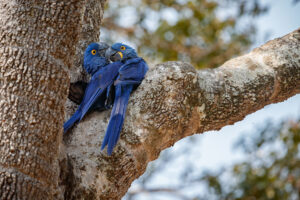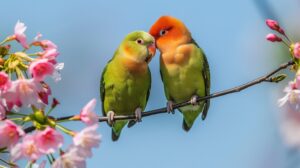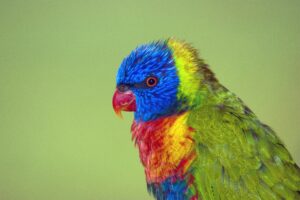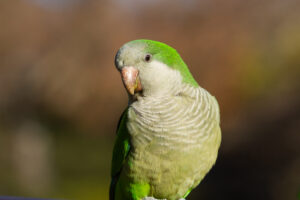Introduction
Have you been trying to train your macaw without success? You’re not alone. Many macaw owners struggle with basic macaw training, often feeling frustrated and ready to give up. The good news is that with the right approach, patience, and understanding, successful macaw training is absolutely achievable.
Macaws are among the most intelligent birds in the parrot family, with some species having the cognitive abilities of a 5-year-old child. Their intelligence makes them highly trainable, but it also means they require proper macaw training techniques and consistent practice to thrive in a domestic environment.
In this comprehensive guide, we’ll explore the five most common reasons why your macaw training efforts might be falling short and, more importantly, what effective strategies you can implement instead. Whether you’re struggling with macaw step up training, dealing with behavioral issues, or simply wanting to enhance your bond through training a pet macaw, this article will provide you with practical solutions.
Let’s dive into why your current macaw training tips might not be yielding results and discover how to transform your approach for success.
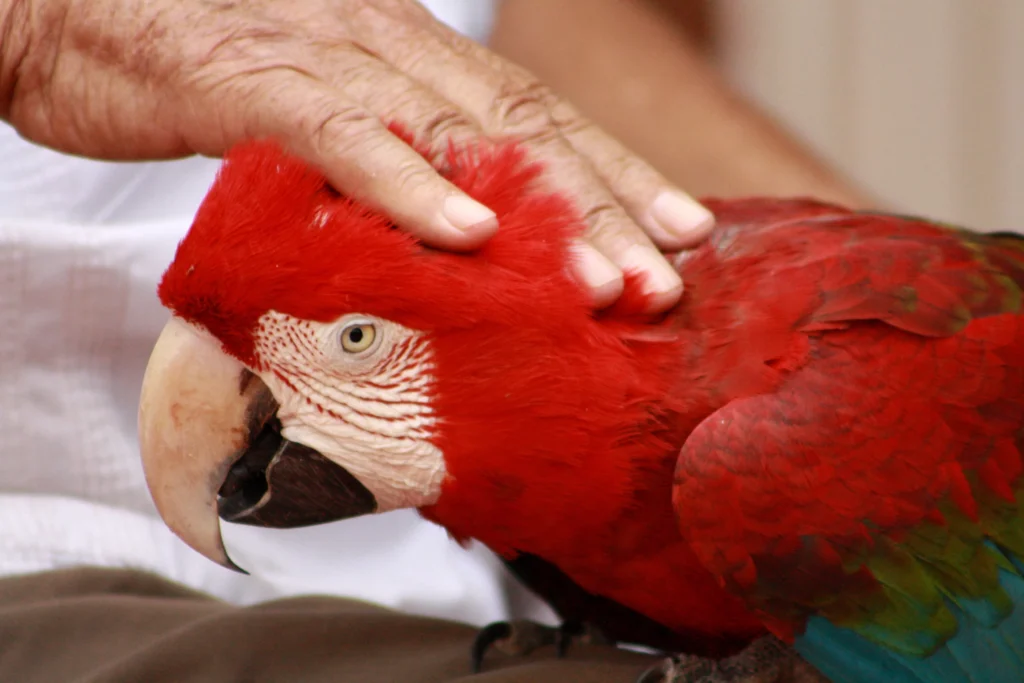
Reason #1: Inconsistent Training Methods
One of the primary reasons macaw training fails is inconsistency in your approach. Macaws are creatures of habit who thrive on routine and clear expectations.
The Problem:
Many macaw owners inadvertently send mixed signals to their birds. For example, you might allow your macaw to step up onto your hand one day but then avoid this interaction the next day when you’re in a hurry. This inconsistency creates confusion about what behaviors are expected and rewarded.
Additionally, if multiple family members interact with the macaw but use different macaw training techniques, the bird receives conflicting messages about acceptable behavior.
The Solution: Establish a Consistent Training Framework
To effectively implement basic macaw training, develop a structured approach:
- Create a daily training schedule: Set aside 10-15 minutes at least twice daily for focused macaw training. The consistency of timing helps your bird anticipate and prepare for these learning sessions.
- Use uniform commands: Ensure everyone in the household uses the same verbal cues and hand signals for specific behaviors. For example, if “step up” is your command for macaw step up training, everyone should use exactly those words rather than variations like “up” or “come here.”
- Document progress: Keep a training journal to track which macaw training tips work best for your specific bird. Note successes, challenges, and modifications to your approach.
- Maintain consistency across environments: Practice commands in different locations of your home to help your macaw generalize the learning. Start in quiet areas before progressing to more distracting environments.
Dr. Susan Friedman, an expert in applied behavior analysis for companion parrots, emphasizes: “Consistency is the cornerstone of effective macaw behavior training. When we’re inconsistent, we inadvertently teach our birds that compliance is optional.”
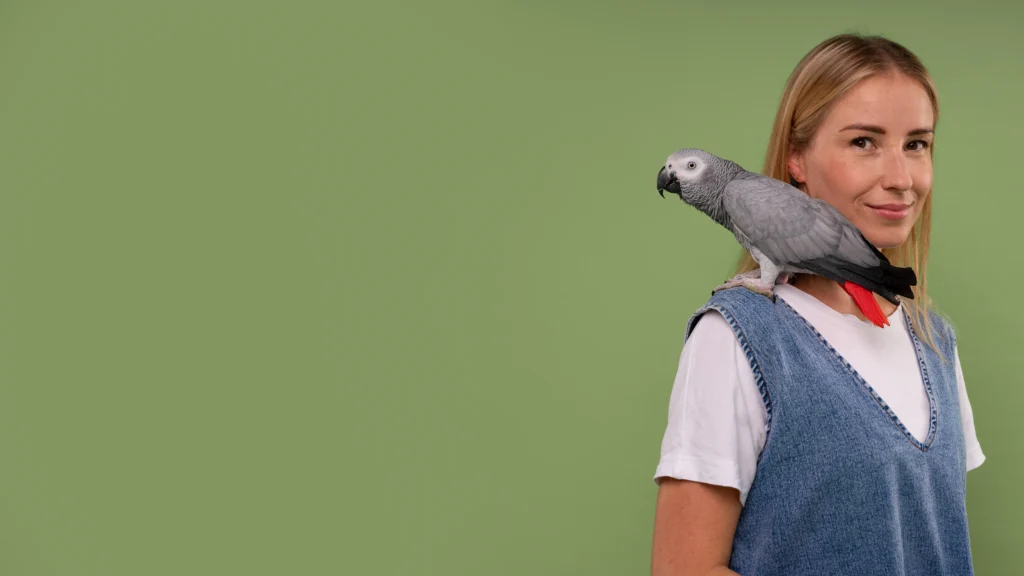
Reason #2: Ignoring the Power of Positive Reinforcement
Many unsuccessful training attempts stem from using outdated approaches that rely on dominance or punishment rather than positive reinforcement for macaws.
The Problem:
Traditional pet training sometimes included negative reinforcement techniques such as spraying water, loud noises, or physical discipline. With highly sensitive and intelligent creatures like macaws, these methods create fear, damage trust, and can lead to increased aggression or anxiety.
Some owners mistakenly believe that their macaw should obey out of respect or dominance hierarchy, which fundamentally misunderstands avian psychology.
The Solution: Embrace Positive Reinforcement Training
Positive reinforcement for macaws is scientifically proven to be the most effective approach for training a pet macaw:
- Identify proper rewards: Discover what motivates your specific macaw. While many respond well to food treats (small pieces of nuts or fruit), others might prefer verbal praise, head scratches, or playtime with a favorite toy.
- Timing is crucial: Reward must come immediately after the desired behavior to create a clear connection. Even a few seconds delay can confuse your macaw about which action earned the reward.
- Use a bridge signal: A clicker or specific word like “good” can mark the exact moment your macaw performs correctly, bridging the gap between behavior and reward delivery.
- Gradually phase out food rewards: As behaviors become established, transition to intermittent reinforcement and incorporate more social rewards to maintain the behavior without constant treats.
According to renowned avian behaviorist Barbara Heidenreich, “When implemented correctly, positive reinforcement for macaws creates a bird who is not only compliant but enthusiastic about training sessions and interactions with their human companions.”
The World Parrot Trust recommends that all macaw training for beginners should start with this approach, as it builds confidence in both the bird and owner while strengthening their relationship.
Reason #3: Misunderstanding Macaw Body Language and Behavior
Effective macaw behavior training requires understanding your bird’s communication signals. Missing these cues can lead to training setbacks and damaged trust.
The Problem:
Many owners push training sessions beyond their macaw’s comfort zone, misinterpreting stress signals as stubbornness or disobedience. This misreading often occurs because humans and birds communicate very differently, and subtle avian body language can be easy to overlook.
Even experienced owners sometimes fail to recognize when their macaw is overstimulated, anxious, or simply needs a break, leading to frustration on both sides.
The Solution: Become Fluent in Macaw Communication
To improve your macaw training techniques, develop your ability to read and respect your bird’s signals:
- Learn to recognize stress indicators:
- Pinned (constricted) pupils
- Raised feathers on the head or neck
- Rapid breathing
- Body rigidity
- Subtle leaning away from you
- Beak clicking or slight opening
- Respect body autonomy: If your macaw displays discomfort during hand training macaws exercises, take a step back and give them space before gradually reapproaching.
- Watch for receptive learning signals:
- Relaxed body posture
- Attentive eye contact
- Engaged head movements
- Gentle leaning toward you
- Playful behavior
- Build training around natural behaviors: Observe your macaw’s natural tendencies and incorporate these into your macaw tricks training. For example, if your bird naturally bobs its head to music, you might develop this into a “dance” command.
The Journal of Avian Medicine and Surgery published a study showing that owners who could accurately interpret their parrot’s body language reported 73% more success in training outcomes compared to those with poor recognition skills.
Dr. Irene Pepperberg, renowned for her work with Alex the African Grey Parrot, notes: “Understanding your macaw’s communication is as important as the macaw training tips themselves. When we respect their signals, we create an environment where learning can flourish.”
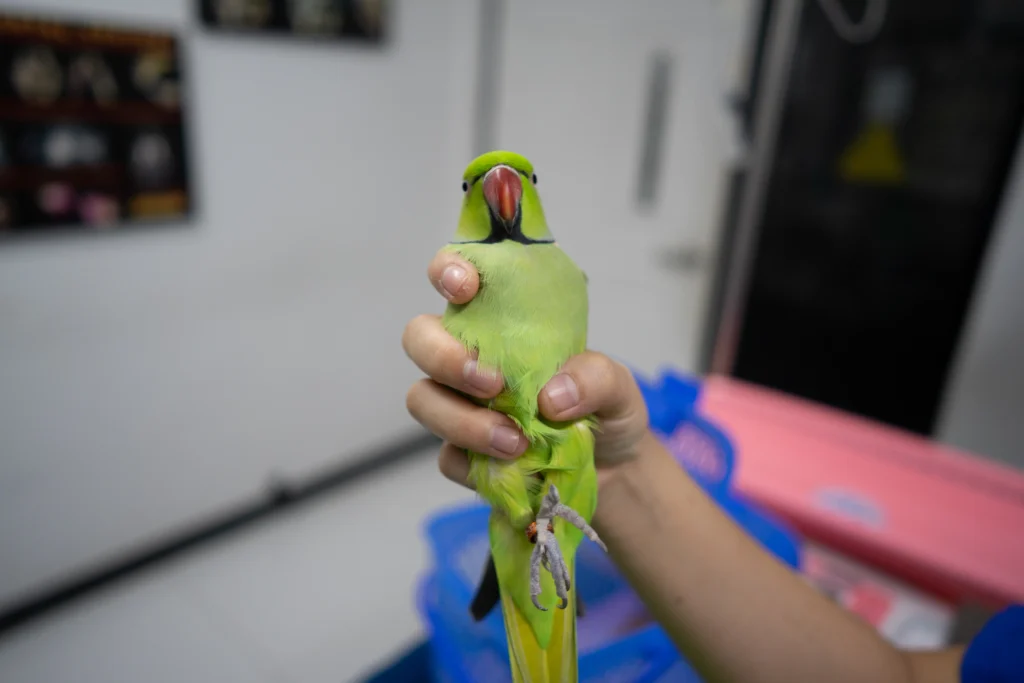
Reason #4: Unrealistic Expectations and Poor Goal Setting
Setting appropriate training goals is crucial for successful macaw training for beginners. Unrealistic expectations often lead to frustration and abandonment of training efforts.
The Problem:
Many new macaw owners expect rapid results, comparing their bird’s progress to videos they’ve seen online or stories from other bird owners. This comparison overlooks the unique personality, history, and learning pace of individual macaws.
Additionally, owners sometimes attempt advanced macaw talking training or complicated tricks before establishing basic trust and foundational behaviors. This approach typically fails and damages the training relationship.
The Solution: Establish Progressive, Achievable Training Goals
Create a strategic approach to training a pet macaw with realistic milestones:
- Begin with relationship building: Before formal training, focus on how to bond with a macaw through quiet presence, respectful interactions, and positive associations.
- Establish a training hierarchy:
- Start with basics like targeting (touching a stick with their beak)
- Progress to macaw step up training
- Move to simple positional commands (stay, come)
- Advance to more complex behaviors like retrieving objects or macaw talking training
- Set micro-goals: Break down each skill into tiny achievable steps. For example, when teaching macaw commands like “step up,” you might begin by rewarding the bird for simply looking at your hand, then for leaning toward it, before expecting them to actually step onto it.
- Respect individual timelines: Some macaws learn certain behaviors quickly while struggling with others. A bird that easily masters macaw step up training might take months to feel comfortable with cage training macaws exercises.
- Document incremental progress: Celebrate small improvements rather than focusing solely on the end goal. Note when your macaw shows less hesitation, attempts a behavior, or displays increased confidence.
Avian veterinarian Dr. Brian Speer recommends: “Create a macaw training schedule that respects your bird’s individual learning pace. Training a macaw is more like growing a garden than building a house—it requires nurturing over time rather than forcing results.”
Reason #5: Overlooking Environmental and Health Factors
Your macaw’s physical health and environment significantly impact their receptiveness to training. Discomfort, illness, or environmental stressors can undermine even the best macaw training tips.
The Problem:
Training failures are sometimes incorrectly attributed to stubbornness or lack of intelligence when the real issues are physical or environmental. A macaw that seems unwilling to participate in training a pet macaw sessions might actually be responding to:
- Undiagnosed health problems
- Nutritional deficiencies
- Environmental stressors (temperature extremes, loud noises)
- Inappropriate cage placement or setup
- Lack of proper sleep
- Hormonal fluctuations
The Solution: Create Optimal Conditions for Learning
To support successful macaw training techniques, ensure your bird’s basic needs are fully met:
- Ensure regular veterinary care: Schedule twice-yearly checkups with an avian specialist to catch subtle health issues that might affect behavior and training progress.
- Optimize nutrition: Provide a varied diet rich in fresh vegetables, appropriate fruits, high-quality pellets, and limited amounts of nuts and seeds. Nutritional deficiencies can impact cognitive function and energy levels.
- Evaluate your training environment:
- Choose quiet spaces free from distractions for initial training
- Ensure comfortable room temperature (65-80°F)
- Provide good lighting without glare or shadows
- Remove potential distractions like mirrors or other pets
- Respect natural rhythms: Align your macaw training schedule with your bird’s natural energy patterns. Most macaws are most alert and receptive in the morning and late afternoon.
- Address cage comfort: Implement proper macaw cage training by ensuring their primary living space is appropriately sized, well-positioned, and equipped with proper perches, toys, and enrichment items.
The Association of Avian Veterinarians emphasizes that “A macaw’s environment and physical wellbeing form the foundation upon which all successful training must be built.”
Essential Macaw Training Techniques That Actually Work
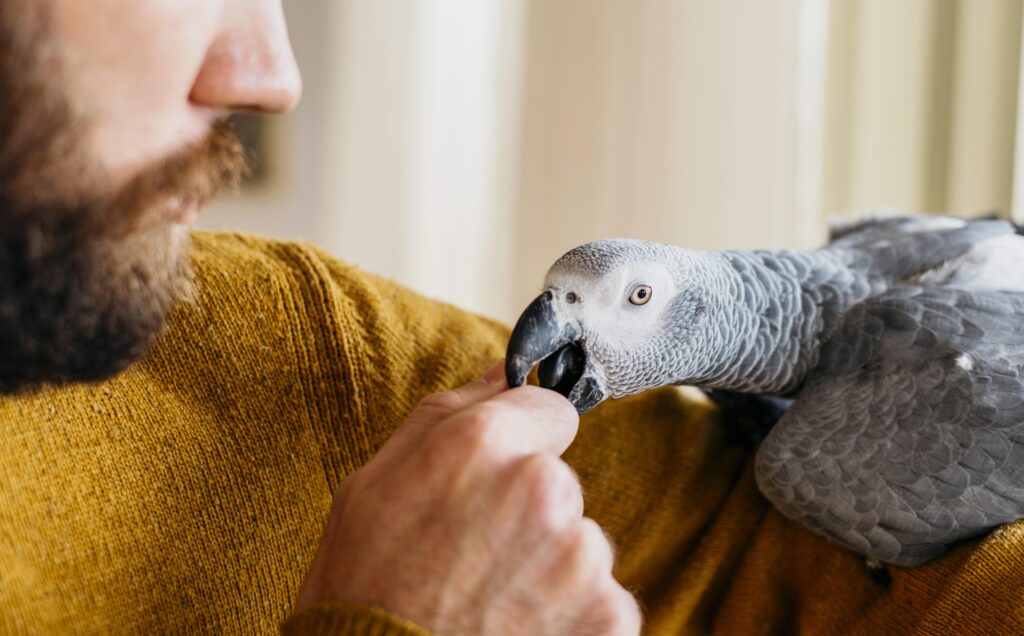
Now that we’ve addressed the common pitfalls, let’s explore proven macaw training techniques that consistently yield positive results:
Target Training: The Gateway to Success
Target training—teaching your macaw to touch a specific object (usually a stick) with their beak—is the foundation for many advanced behaviors:
- Present the target near your macaw without forcing interaction
- When they naturally investigate by touching it with their beak, immediately click/mark and reward
- Gradually increase distance and duration of touch
- Use this foundation to guide your bird to different locations and positions
This technique serves as an excellent starting point for how to train a macaw because it establishes the concept of cause and effect in training while being non-threatening.
Step-Up Training: Building Trust and Cooperation
Macaw step up training is essential for handling and demonstrates the power of patience and progressive approximation:
- Begin by establishing hand trust—allow your macaw to inspect your hand without pressure
- Present the back of your hand or forearm slightly below their chest level
- Pair with the verbal cue “step up” consistently
- Apply gentle pressure against their lower body if needed
- Immediately reward successful steps with praise and treats
- Practice at different heights and locations once the basic behavior is established
Dr. Pepperberg suggests, “The key to successful macaw step up training is creating a positive association with your hand and making the step up more rewarding than staying in place.”
Combating Common Behavioral Issues
How to Stop Macaw Biting
Biting is often a defensive response rather than aggression. To implement effective macaw behavior training for biting:
- Identify and eliminate triggers (forced handling, invading personal space)
- Never punish biting as this escalates fear
- Learn pre-biting body language (eye pinning, body tensing)
- Respect these warnings by backing off
- Reward calm, non-biting interactions
- Use target training to create positive associations with hands
Training Macaw Not to Scream
Excessive vocalization is natural but can be modulated through proper macaw training:
- Never reward screaming with attention (even negative attention)
- Immediately reward quiet periods
- Teach an alternative behavior like whistling or appropriate vocalization
- Ensure adequate exercise, enrichment, and social interaction
- Maintain a predictable daily schedule to reduce anxiety
- Address potential environmental stressors causing alarm calls
According to the Avian Welfare Coalition, “Understanding that screaming serves communication purposes is key to training macaw not to scream. We must provide appropriate outlets for communication and address the underlying needs being expressed.”
Advanced Macaw Training: Talking and Tricks
Once basic trust and commands are established, many owners enjoy advancing to macaw talking training and tricks:
For Talking:
- Choose simple words with hard consonants like “hello” or “good bird”
- Repeat these consistently during positive interactions
- Reward any vocalization attempts that approximate the sound
- Practice in quiet environments with minimal distractions
- Speak with enthusiasm and varied intonation
For Tricks Training:
- Use target training to shape more complex behaviors
- Break tricks into small achievable components
- Build on natural behaviors your macaw already displays
- Keep sessions short (5-7 minutes) but frequent
- End while your bird is still engaged and successful
Remember that macaw tricks training should always be enjoyable for your bird, never forced or stressful.
Creating an Effective Macaw Training Schedule
Consistency is key to successful macaw training for beginners. Here’s a sample schedule that incorporates the principles discussed:
Daily Training Structure:
- Morning Session (10-15 minutes): Focus on high-priority behaviors like step-up or basic commands when your macaw is most alert
- Midday Enrichment: Provide foraging toys that reinforce problem-solving skills
- Evening Session (5-10 minutes): Review morning skills or work on more relaxed behaviors like gentle handling or preening acceptance
Weekly Focus Areas:
- Mondays & Thursdays: Step-up and handling skills
- Tuesdays & Fridays: Target training and movement-based activities
- Wednesdays: New skill introduction
- Weekends: Review and reinforcement of established behaviors
Rotate focus areas while maintaining consistency in approach. Document progress in each area to track which macaw training tips are most effective for your specific bird.
The Role of Environmental Enrichment in Training
Environmental enrichment complements formal macaw training sessions by promoting psychological well-being and cognitive development:
- Foraging opportunities: Hide treats throughout the cage or in puzzle toys to encourage natural problem-solving behaviors
- Rotation of toys: Introduce new toys regularly while keeping favorites available
- Social enrichment: Provide supervised out-of-cage time and varied social interactions
- Sensory stimulation: Offer different textures, sounds, and visual experiences
According to research published in the Journal of Applied Animal Welfare Science, macaws with enriched environments show significantly higher success rates in training programs compared to those in sterile environments.
Building a Lifelong Training Partnership
How to bond with a macaw extends beyond formal training to creating a relationship based on mutual respect and communication:
- Respect body autonomy: Always give your macaw choice in interactions
- Observe and respond: Pay attention to subtle communication signals
- Create positive associations: Ensure your presence consistently predicts good experiences
- Engage in non-training bonding: Share quiet time, gentle music, or simply being present together
- Learn your macaw’s preferences: Discover favorite foods, activities, and interaction styles
Dr. Fox of the International Association of Avian Trainers and Educators notes: “The strongest foundation for macaw training isn’t technique but relationship. When a macaw trusts you completely, learning flows naturally.”
When to Seek Professional Help
While this guide provides comprehensive macaw training tips, some situations warrant professional assistance:
- Persistent aggressive behavior
- Self-destructive behaviors like feather plucking
- Severe phobias or anxiety
- Regression in previously established behaviors
- Training plateaus that last more than a few weeks
Certified avian behaviorists can provide personalized guidance for challenging situations. The International Association of Animal Behavior Consultants maintains a directory of qualified professionals.
Conclusion: The Path to Successful Macaw Training
Training a pet macaw is both an art and a science that requires patience, consistency, and respect for your bird’s individual nature. By avoiding the five common pitfalls we’ve discussed and implementing the suggested alternatives, you’ll create an environment where your macaw can thrive and learn.
Remember that successful macaw training isn’t measured solely by the tricks your bird performs but by the quality of relationship you build together. A well-trained macaw isn’t simply obedient—they’re confident, engaged, and an active participant in interactions.
Whether you’re just beginning basic macaw training or looking to refine advanced behaviors, the principles remain the same: use positive reinforcement, respect your bird’s communication, set realistic goals, maintain consistency, and address environmental and health foundations.
For more information on caring for your feathered companion, explore our other helpful guides at PetsPump, including articles on macaw nutrition, cage setup, and health monitoring.
By implementing these evidence-based macaw training techniques, you’ll transform frustration into progress and build a rewarding relationship with your magnificent macaw companion.
Resources for Further Learning
- World Parrot Trust: Comprehensive resources on parrot care and training
- Good Bird Inc.: Barbara Heidenreich’s collection of positive reinforcement training resources
- Association of Avian Veterinarians: Find a qualified avian veterinarian in your area
- Avian Welfare Coalition: Information on environmental enrichment and behavioral needs
- Dr. Susan Friedman’s Behavior Works: Science-based approach to companion parrot behavior
Have you overcome challenges in training your macaw? We’d love to hear your success stories and additional macaw training tips in the comments below!



